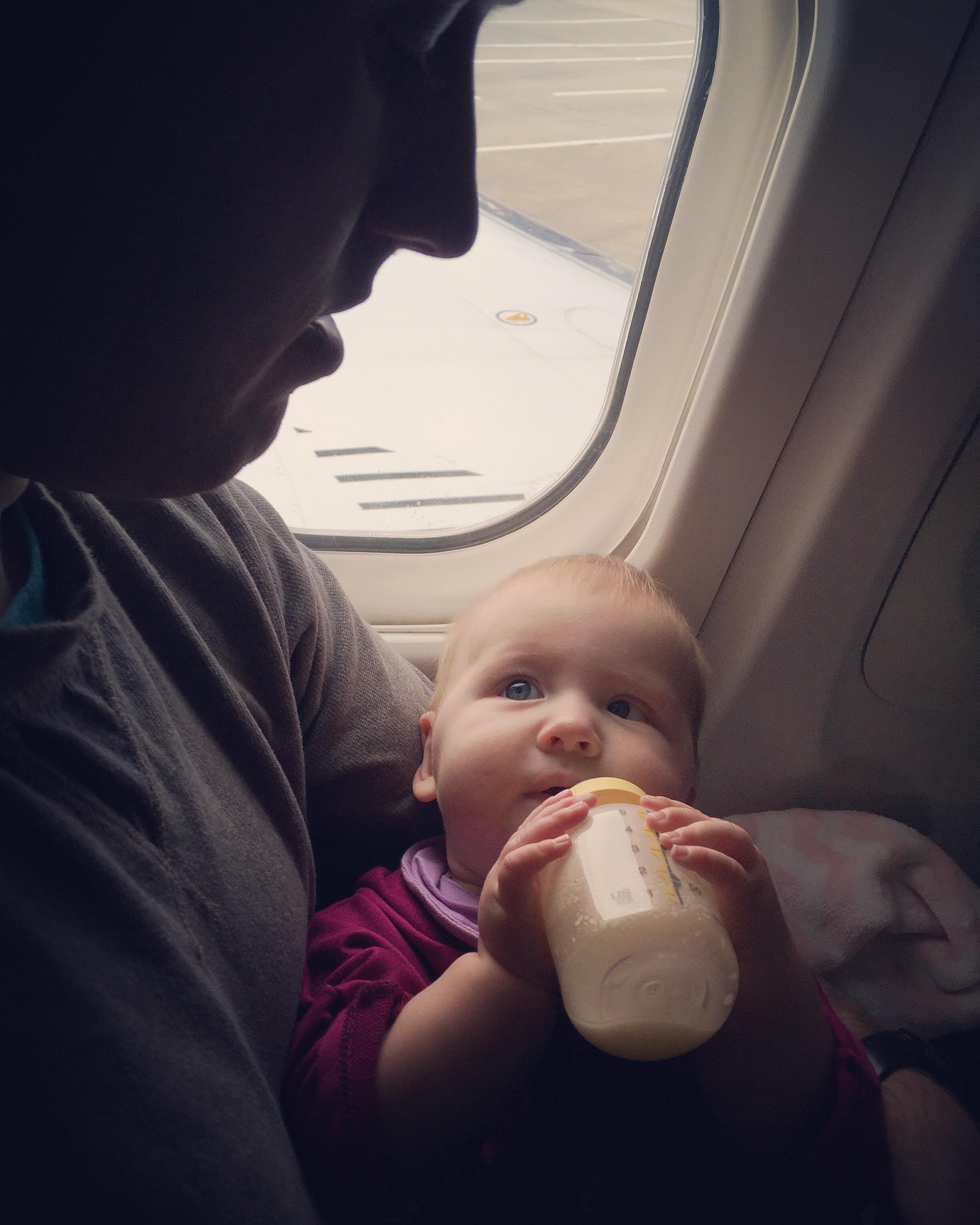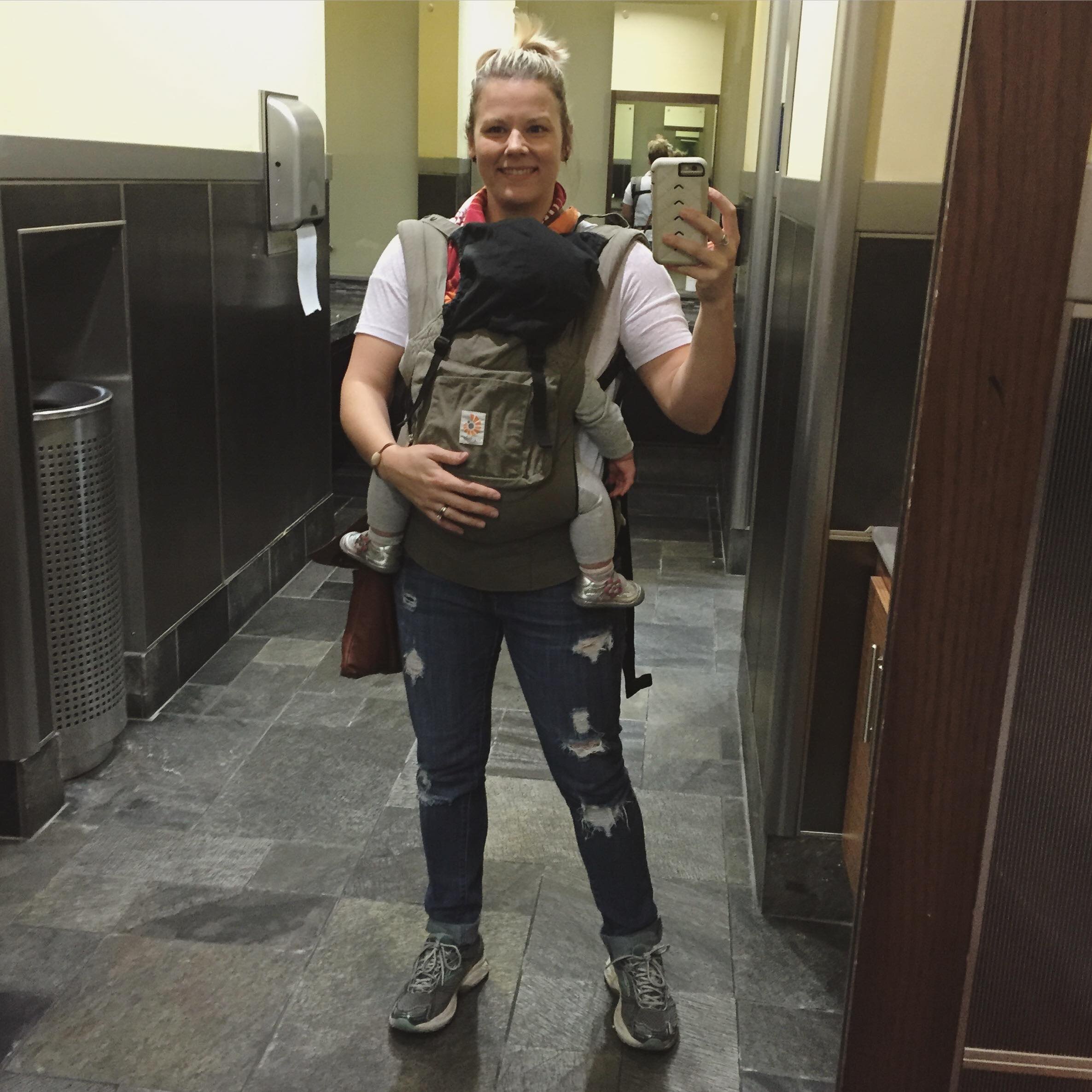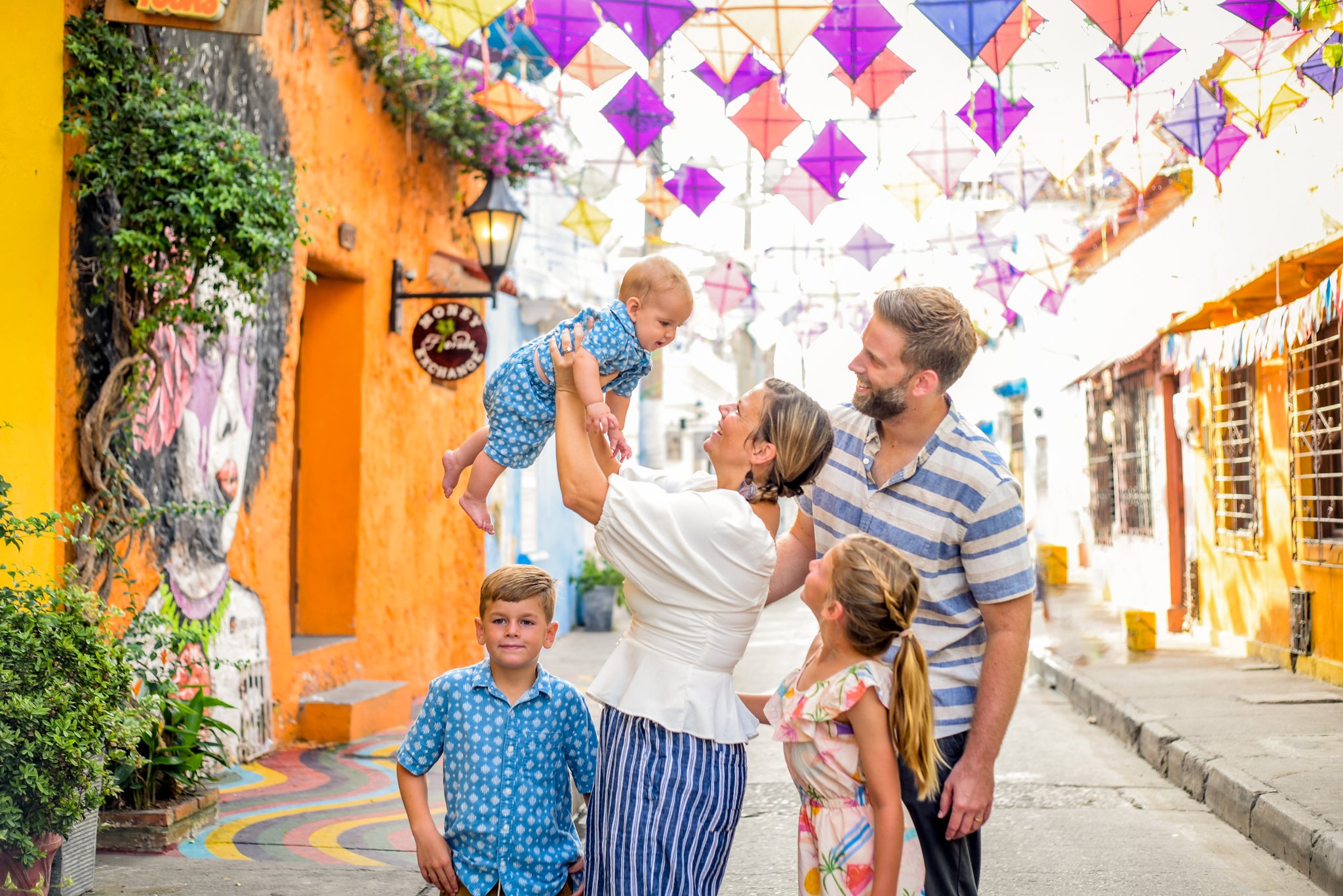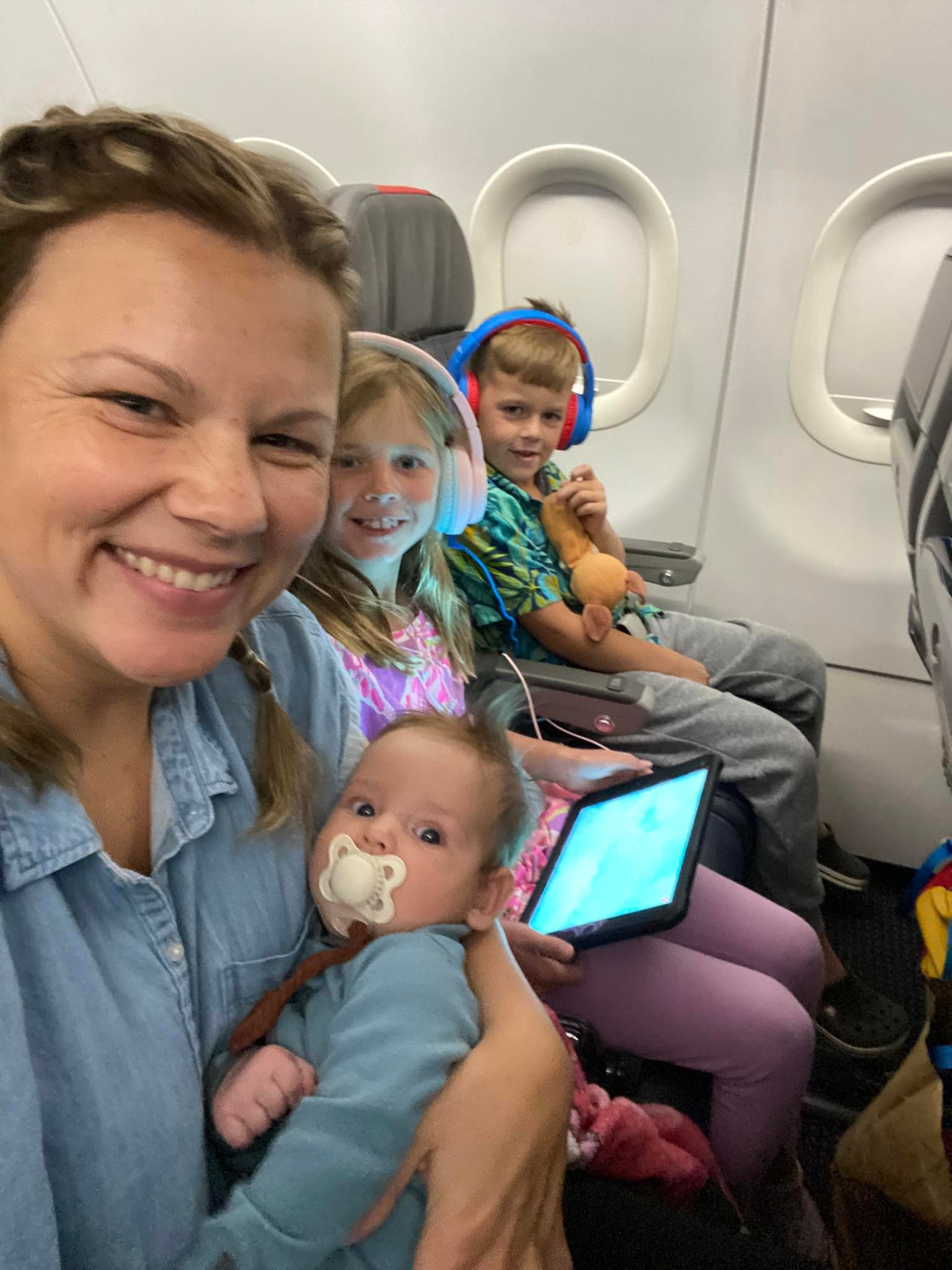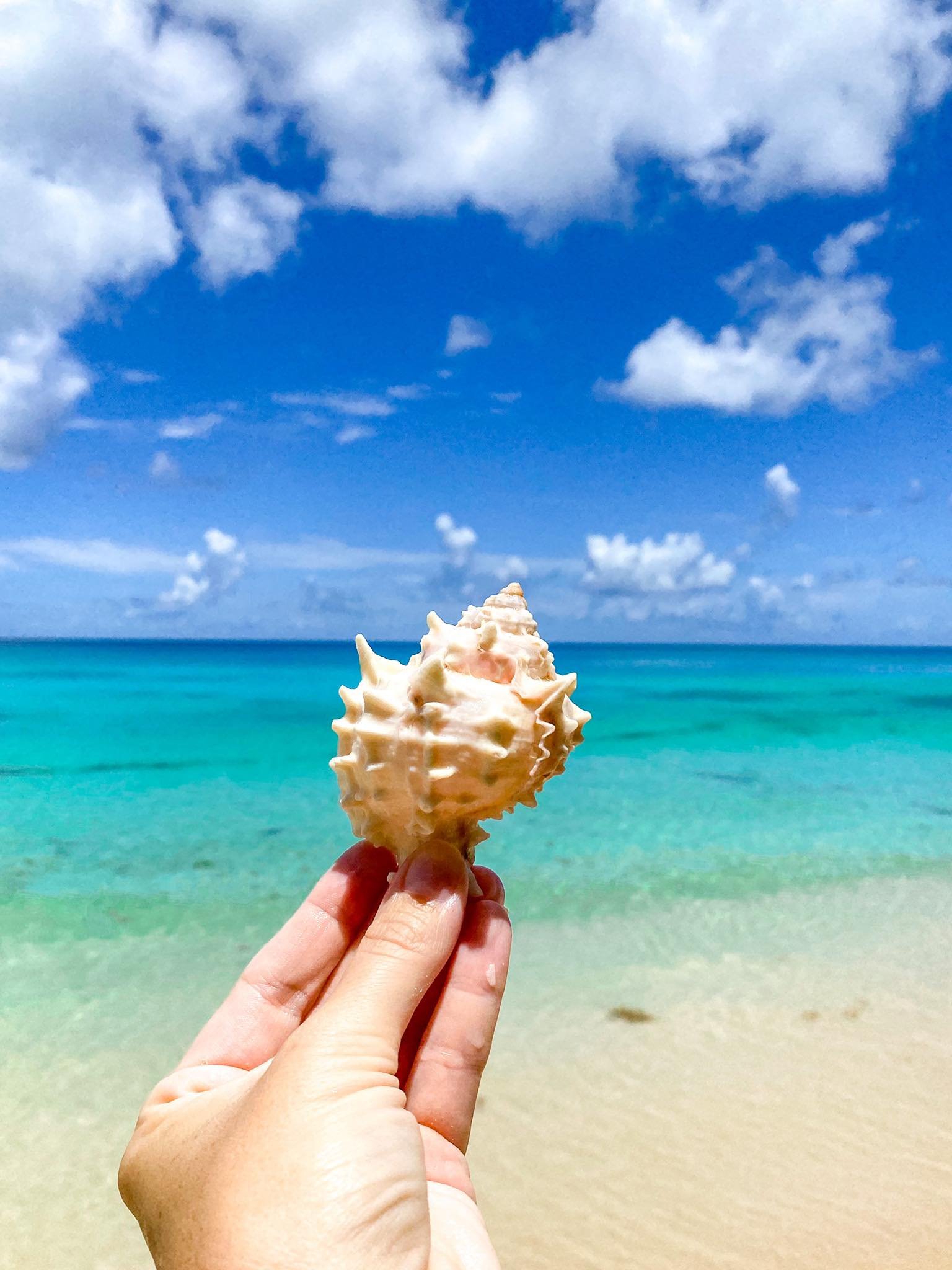10 Tips for Flying with a Baby
/Flying home from 2 weeks in europe with our 6 month old.
If you’re looking for the best tips for flying with a baby, you’re in the right place. I have flown countless times with a baby and most of those time, I was flying with a baby alone! As a first-time mom or first-time parent, taking a baby on a plane for the first time can feel overwhelming. However, looking back on flying with a baby versus now flying with two toddler/preschool-age kids, I would take the baby in a heartbeat.
If you can, request a basinett for your baby to sleep in!
Flying with a baby is a great way to take advantage of the age of immobility and no opinions. It is also a great way to save some money if you’re flying with an infant on lap. With my first child, I flew alone with her when she was 6 weeks old and I had nowhere to turn for tips for travel with baby. I ripped the Band-Aid of fear right away and we never looked back. Now, at 9 years old, she’s been on over 130 flights.
My youngest baby is now 16 months old and has been on 29 flights to 11 countries. You too will not only survive flying with a baby, but you’ll thrive! Put your worry aside and use these travel tips for flying with an infant to make your trip easier and more relaxing. This guide is the has all the best tips for flying with baby.
READ NEXT: 10 Tips for Flying Alone with Kids
This site contains affiliate links to products. We may receive a commission for purchases made through these links.
Here are my top 10 Tips for Flying with a Baby:
1) Nurse or feed the baby on take-off and landing is the most common piece of advice given to new parents before their first time flying with a lap infant. I would agree. As a mother who flew nursing babies for years, I can say I usually breastfed during this time. However, if I was flying solo with my baby, I usually brought along a bottle of pumped milk (or, if you don’t nurse, a pre-measured container of formula) and was prepared to offer a bottle.
I pumped a bottle for my daughter who is notorious for being distracted on airplanes during take off and landing.
My babies were often distracted by all of the excitement of the plane and wouldn’t stay latched. A bottle offered me the chance to follow their moving head and keep them suckling during this time. If the flight isn’t during the baby’s normal feeding time, I dip a pacifier into Gripe Water and let them suckle that for take-off and landing.
Pro tips for flying with a baby ear pressure:
Nurse/Bottle feed on take off and landing OR have them suck on a pacifier
Pacifier for take off and landing!!
2) Babywear the baby through security. For babies, I love using the Ergobaby soft carrier. This carrier gives the baby a safe place to ride along and leaves the parent's hands free. In the United States, if you are flying with a baby TSA screening processes are straightforward, but you will have to have your hands swiped and may be subject to a small, non-threatening pat-down.
babywearing + wearing my backpack while Flying solo with an 8 month old from florida to washington dc
Another perk of the soft carrier is that it keeps your baby close to you and out of reach of well-intentioned strangers who may want to touch the baby. Babywearing in an airport is a way to protect the infant from the endless germs airports and planes bring. A baby carrier is one of my best flying with newborn tips because it keeps other peoples germs far away.
Flying solo wtih 2 kids and a Baby! Baby wearing is a must!
Traveling with a baby and a toddler means streamlining our gear. Baby in the carrier on front, backpack on my back and toddler in the GB pockit!
3) Use a backpack style diaper bag instead of a shoulder bag. We have always done this because we also use the backpack as our day pack wherever we are going. The backpack style also usually has more space to store items. However, the main reason for this suggestion is that it allows you to wear the baby on the front, the backpack on your back, and be hands-free for other airport tasks. When you’re flying with infant and flying with a toddler, this style diaper bag is extra helpful for multiple diaper sizes and feeding tools.
READ NEXT: 25 MUST HAVE Travel Products for Babies and Toddlers
We always make sure to pack extra food, breastmilk and whatever we absolutely need to last us 24 hours.
4) Pack enough formula and diapers to last the entire journey plus 10-15 hours. There are very clear rules from TSA allowing travelers with babies/kids (within the United States) to bring liquids, medicine, and feeding necessities (baby food) for a flight. Even over 3oz. One of the pro tips when flying with a baby is to prepare for the trip taking longer than expected and know that many airports do not offer formula, so pack enough supplies to get you through an extra 5-10 hours of travel. If your baby is eating solid food, take the same precautions and pack enough for the entire trip, plus. Flying with a baby internationally will bring its own requirements, so check the local regulations for that country when flying back to the USA.
READ NEXT: 6 Tips for Traveling with a Picky Eater
5) Bring your medicines and medical equipment with you onto the plane. One mistake I made once was to pack my daughter’s infant medicine in my checked bag. However, during our first flight, she spiked a fever and I needed the medicine. I couldn’t access it during our layover either and the airport didn’t have anything. While she was fine (albeit very fussy), it made me realize to pack that kind of essential in my backpack in the future. I now keep an infant Motrin, and a bottle of gripe water in my backpack when I travel with an infant just in case. I also have brought my breast pump onto the plane with me and used it to pump on a long layover. We have a Chase Sapphire Reserve Credit Card (I highly recommend for travel) and it gets us access to airport lounges all over the world. These lounges have been amazing when flying with a infant because I have clean, comfortable spaces to nurse and pump. Check out 7 Ways To Save Money to Travel More
NOTE: Breast Pumps are medical devices and are allowed on the plane.
READ NEXT: Breastfeeding Essentials for Traveling Moms
You never know when a blowout will happen! Here we are changing our 5 month old on a flight from paris to atlanta
6) Pack at least one spare outfit for the baby and one spare shirt for yourself. I have, more times than I can count, been puked on, pooped on, or spilled on mid-air. I pack this wet bag in my backpack (see tip 3) and I put 1-2 spare outfits for the baby and one spare shirt for myself inside. When clothes get soiled, I simply put the wet items into the wet bag and everything else in my backpack stays clean! A wet bag is at the top of my must have travel gear for flying with babies!
7) Flying with a Baby Identification Requirements: You need an ID for a baby. Even if you fly with a baby domestically, you could be asked to prove the age of the baby. A copy of the birth certificate, the actual birth certificate, a military ID, or another form of government ID such as a passport will work.
I have never been asked for ID for an infant on a domestic flight, but it does happen, so be prepared. If you are flying with a lap-child getting close to age 2, you will likely be asked, so have your documents ready. If you are flying with a baby internationally, I also take photos of all of the babies identification records (in addition to carrying them) just in case something gets stolen or lost on the trip.
Typically if you’re baby is bigger, you definitely need to prove they are under two. So, if you’re flying with a 10 month old and they look huge - be safe and bring the documents.
Flying solo with 2 kids and a Baby!
Latham in his own seat on a flight from florida to atlanta
8) Ask the gate agent if there are any open seats on the plane. Of all of my flying with a baby tips, this one has been such a lifesaver. Many times I have purchased an “infant in arms” ticket, but asked a gate agent if there are any extra seats. When there are seats available, they have accommodated the infant by offering us to move near the open seat.
This means the baby ends up getting their own space. It may not happen every time, but it is definitely worth asking. Otherwise, wait until the plane reaches altitude (and when it’s safe) to move to an area with an empty seat for you to spread out. This tip is also helpful if you are flying with an infant that you want to ride in their car seat on the plane - when they have their own seat the airline allows them to sit in their car seat for the duration of the flight!
When you’re traveling with infant on plane, what seat is best? I prefer sitting in the aisle seat when traveling with an infant in arms. This gives me some room to expand and the baby is not as likely to bump my seatmate. Also, it makes getting up and down easier! However, if you’re sure you can get your baby to sleep on the plane, the window seat would be great so your neighbor doesn’t need you to get up when they need to use the restroom.
READ NEXT: 12 Tips for Making a Long Haul Flight with Kids Easier
When I fly solo, I take atvantage of preboarding! I like to get situated and get the kids situated! (Ages 1 and 2)
9) Tips for boarding and deplaning.
Boarding: If you are flying solo with your baby and you have a carry-on item, it makes sense to board first to get yourself situated without the pressure of a long line of passengers waiting for you. However, if you are flying with another adult companion, allow the companion to board first with all of the gear. Then, the other parent boards very last so that the baby isn’t sitting on the plane getting restless through boarding. In short - when I fly solo - I board during early boarding. When I fly with an adult companion, I board very last and allow the companion to board our things and get situated.
Deplaning: If possible, get off the plane last. If you aren’t in a rush to make a connecting flight, then there is no need to rush deplaning. Take your time, be sure you’ve gathered all of your gear, and use the extra space to get the baby back in the carrier before you deplane. If you fly with a baby solo, ask a flight attendant for help if you need it! They are glad to help you!
If you’re looking for more tips for flying with a baby alone, check out my 10 tips for flying solo with kids!
No need to deplane right away. If the baby is asleep, let them sleep until everyone else deplanes!
10) How do I change a diaper on a plane? Did you know that most airplanes have a changing table in the restroom? Different airlines will offer different accommodations, but most have a designated area to change a diaper on a plane.
Most likely the bathroom at the back of the plane will have a changing table that folds down from the wall. It is usually located behind the toilet.
HERE is an Instagram Reel I made of the airplane changing table for you to see!
If you are on a very small plane, it may not have a changing table. In this case, I recommend one of two ways:
Ask the flight attendants if you can put down a changing pad and change the baby on the floor of the galley. Flight attendants are used to flying babies and will help you find the right place to change a baby on a plane.
Put down a pad on the airplane seat and change the baby right there.
Here is an example of an airlplane changing table! This is an american airlines flight.
(BONUS TIP) Relax. One of the best tips for flying with babies, in my opinion, is to do your best to just relax. Babies sense fear and angst. Remember that you are not the first parent to fly with a baby and you won’t be the last parent flying with baby! The more worked up you are, the more likely your little one will be fussy causing the flight and travel day to spiral. Flying is the same as before baby only now strangers will be significantly nicer to you. So, relax. Take deep breaths and rock that little baby to sleep.
READ NEXT: 9 Tips To Get Your Child to Sleep on a Plane
After nursing, my son fell right asleep on a domestic flight
Whether you’re flying with a 2 month old or travelling by plane with baby of any age - remember that it’s is not as hard as it may seem. Pack only what you need, take your time, and stay as calm as possible. Take time to read over the TSA flying with a baby guidelines and know exactly what you can and can’t bring with you. Always give yourself enough time to get through the airport without having to run. When you can, consider gate checking or fully checking your stroller or car seat so you aren’t having to lug it with you through the airport. If you’re also traveling with a toddler, check out my 12 Tips for Traveling with Toddlers.
We’ve got loads more tips for family travel on the blog, so go check it out!
What is your number one tip for flying with a baby?
Other Articles You May Like:
Pin me:
AMAZON AFFILIATE DISCLOSURE:
There are links on this site that can be defined as “affiliate links”. This means that I may receive a small commission (at no cost to you) if you subscribe or purchase something through the links provided.
Big Brave Nomad is a participant in the Amazon Services LLC Associates Program, an affiliate advertising program designed to provide a means for website owners to earn advertising fees by advertising and linking to amazon.com, audible.com, and any other website that may be affiliated with Amazon Service LLC Associates Program.





